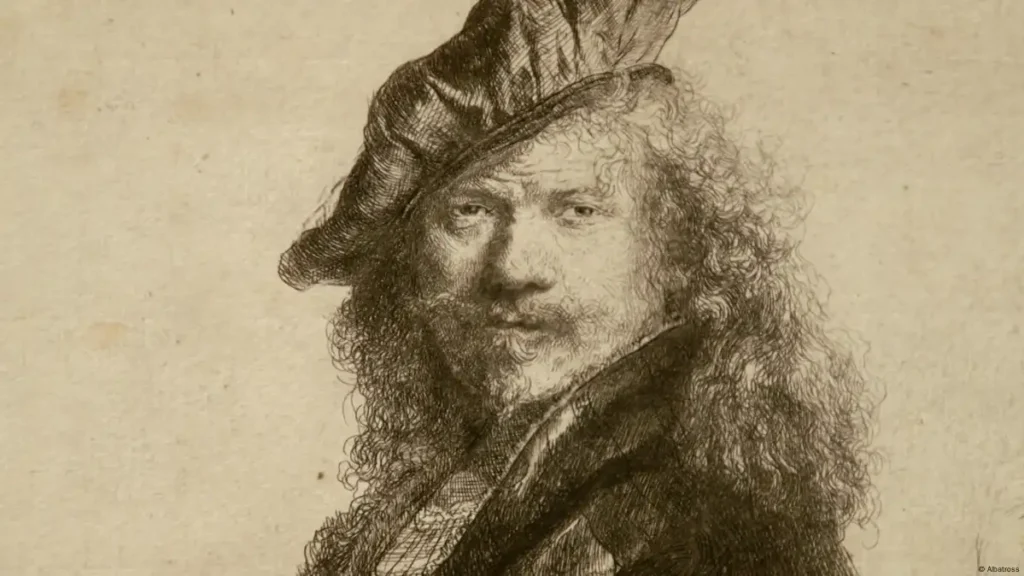Rembrandt van Rijn, one of history’s most revered artists, is celebrated for his profound exploration of human emotion and introspection. His self-portraits are particularly compelling, offering insight into not only his artistic skill but also his psychological landscape. Among these, his works from various stages of his life showcase his transformation both as an artist and as an individual. His depictions evolve from youthful confidence to the marked vulnerability of later years, capturing the raw essence of aging, loss, and resilience.
The Significance of Rembrandt’s Self-Portraits
Rembrandt’s series of self-portraits—over 80 in various media including paintings, drawings, and etchings—were more than simple representations. They served as both exercises in self-examination and demonstrations of his mastery in manipulating light, shadow, and texture. The most notable aspect of his self-portraits is the intense realism and honesty; unlike many artists of his time who idealized their own image, Rembrandt presented himself with unflinching candor, highlighting imperfections, furrowed brows, and aged skin.
Each self-portrait acts as a timestamp, reflecting shifts in his life circumstances and the broader social context of 17th-century Amsterdam. Early portraits feature a bold, almost flamboyant young man asserting his position in the art world. Later works depict a more introspective and somber figure, marked by the personal and financial struggles that defined his later years. The evolution visible in these portraits speaks to the universal human experience of growth, change, and the search for meaning.
Techniques That Define His Self-Portraits
Rembrandt’s technical innovations were pivotal in achieving the lifelike quality of his self-portraits. One of his most famous methods was his application of chiaroscuro—the dramatic use of light and shadow to create a three-dimensional effect. This technique allowed him to emphasize expressions and bring an almost tactile quality to the skin, fabric, and eyes depicted in his works. His application of impasto, or thick layers of paint, added texture and depth, enhancing the emotional weight of his portraits.
In addition to his mastery of light, Rembrandt was adept at conveying psychological depth. His eyes, rendered with precise detail, are focal points that reveal layers of emotion. Each gaze carries a narrative—whether defiant, contemplative, or resigned—drawing the viewer into an intimate dialogue with the artist.
“Chasing Rembrandt”: Art as Business
The legacy of Rembrandt extends beyond his life into the art market, where his works have become synonymous with high value and prestige. The phrase “Chasing Rembrandt” aptly describes the intense pursuit of his paintings by collectors and institutions, underscoring how art has transitioned from purely cultural artifacts to highly prized commodities. This shift reflects broader changes in how art is valued in contemporary society.
The art world has evolved into a multifaceted industry where historical and contemporary works are assessed not just for their cultural and aesthetic contributions but also for their investment potential. Rembrandt’s self-portraits, particularly rare and significant ones, have been sold for tens of millions at auction, serving as symbols of both artistic genius and financial status.
The Historical Transition from Art to Investment
During Rembrandt’s lifetime, art was supported largely through patronage by wealthy clients and the church. Artists like Rembrandt, however, were also able to operate somewhat independently by selling their works directly to the public, thanks to the burgeoning Dutch middle class of the 17th century. This period saw an increased appreciation for personal portraits and secular scenes, a departure from religious and royal commissions that dominated earlier eras.
The modern era has further transformed art into a financial asset. Today, collectors see works like those of Rembrandt as investment vehicles, appreciating in value over time and often used to diversify wealth portfolios. High-profile auctions of Rembrandt’s paintings exemplify this trend, with intense bidding wars that push prices to staggering levels. This commercial aspect underscores how art has shifted from a representation of cultural value to a complex intertwining of culture, economy, and status.
The Ethical and Cultural Debate
The commercialization of art raises significant questions about accessibility and cultural heritage. When masterpieces like Rembrandt’s self-portraits become mere assets in private collections, they risk being inaccessible to the public, depriving future generations of the opportunity to study and be inspired by them. This exclusivity creates a tension between art as a shared human treasure and as a private possession for the privileged few.
Museums and public institutions strive to maintain the balance by acquiring important works for public display, but they often face stiff competition from private collectors with deep pockets. The debate continues: should art primarily serve as a public good, fostering education and cultural enrichment, or as a private asset signifying personal wealth and investment acumen?
The Timelessness of Rembrandt
Rembrandt’s self-portraits continue to fascinate not only for their artistic brilliance but also for their embodiment of the artist’s vulnerability and humanity. They serve as mirrors reflecting the universal truths of life—ambition, struggle, aging, and introspection. Meanwhile, the narrative of “Chasing Rembrandt” highlights the complex reality of art as both a cultural legacy and a high-stakes business.
In today’s world, where art can signify status, investment, and cultural heritage simultaneously, Rembrandt’s works remind us of the delicate balance between appreciating art for its intrinsic value and recognizing its role within an ever-evolving economic landscape. As we continue to admire his self-portraits, we do so with the understanding that they are more than mere images; they are powerful relics that bridge personal expression and public fascination, timeless in their ability to resonate and provoke thought across centuries.
No comments yet.








